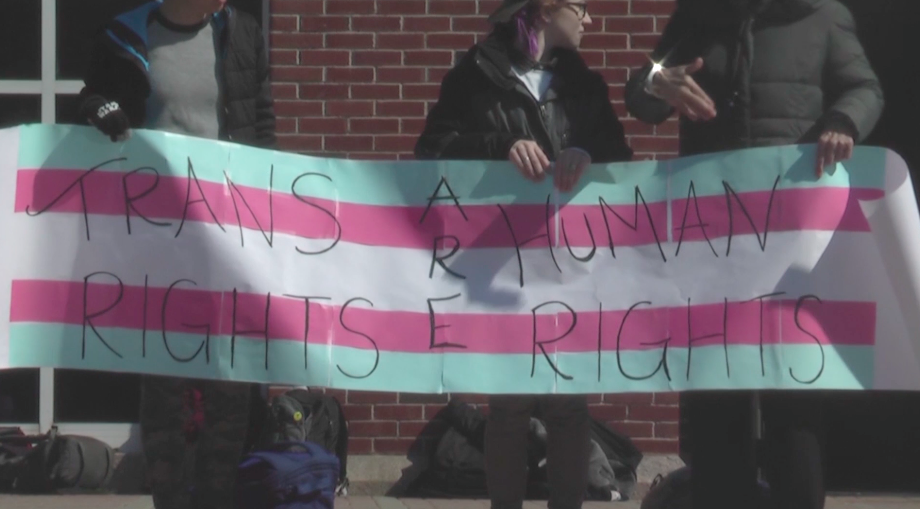By Cali Kees
Follow @calikees
Members of the Gender Sexuality Alliance, other students and faculty members took to the library steps last Monday in a peaceful protest for transgender rights.
Organizers of the protest said this was a response to Trump’s removal of Obama’s transgender ordinance, that allowed transgender students to use the bathroom of the gender they identify with; and Gavin Grimm’s Supreme Court Case that had been sent to a lower court earlier that morning.
Members of the protest also said that they were protesting to raise awareness and to gain support within the Quinnipiac community.
Alexi Mangili, a Quinnipiac senior that helped to organize the protest said they want to, “Just draw more support to the community…and just recognize that there are students here who are in the transgender community and to get more support for them as well. And show that they do have allies here.”
And as the government has seemed to make their statement about the transgender community, Quinnipiac has also made one. Quinnipiac in their continued efforts to become more inclusive and more accepting of a diverse population will be changing the single use bathrooms on campus to gender neutral bathrooms.
“The University is identifying areas that are….already constructed as gender neutral. So even now that they currently say “women,” “men” the intent is because it’s a single bathroom they can be converted to gender neutral bathrooms,” Diane Ariza, Chief Diversity Officer said.
These single use bathrooms are located in the student center and some of the academic buildings on the Mt. Carmel Campus as well as on both the York Hill and North Haven campus’. The signs in front of these bathrooms although already marked for use for either gender will be changing so that it is clearly gender neutral.
Changing the bathroom signs is not the only thing Quinnipiac is doing to help create a more comfortable environment for transgender students. The University has compiled a document to educate trans students and other students and faculty members on how the University deals with topics such as the bathroom issue, intramural sports and dorming.
The document is supposed to be used as an easy to use source of information for those students seeking this kind of information. Although a lot of what is explained in the document has been in place for years it is not well known.
Ariza explained that “for the longest time the residential life has been very supportive of working on a case by case…when requested,” for students to be placed in a living situation with the gender they identify with.
While Ariza and the rest of the Quinnipiac faculty want to try to accommodate every student and be as welcoming as possible sometime every dorming request does not work out.
“Sometimes some of the requests might be a little bit more difficult and then it’s up to the student to decide whether Quinnipiac is the place they want to be or do they prefer to go somewhere else,” Ariza said. “But we’re trying to make this as student centered and friendly and inclusive as possible.”
To help make residential life a better environment for trans students the Student Government Association has been working on an initiative to make even housing at Quinnipiac gender neutral.
“Right now there has been a request by student government to say how could we have more rooms available for first year students as seniors to have gender neutral floors for example,” Ariza said.
Although Quinnipiac has never had mixed gender floors they are nothing new to college campuses around the country.
William Jellison, faculty advisor of GSA and an Associate Professor of Psychology said, “I very much support what Quinnipiac is doing to help protect our transgender students.”
With these changes Quinnipiac is working to make the school a more inclusive atmosphere for every students.



